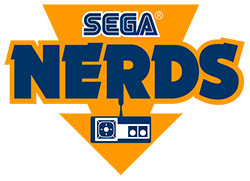
Retro Review: Soul Calibur
QUICK LOOK
EXCELLENT
Excellent
One of the best fighters ever, and frequently cited as the Dreamcast's best game, there are few SEGA exclusives more worthy of your attention. A stone cold classic.
Beat-’em-ups have largely fallen out of favour in recent years.
While a few standard bearers are still doing the rounds, the days of store shelves stacked high with near-identical brawlers are well and truly over. That said, a select few past examples have stood the test of time wonderfully, and serve as enduring reminders of why we all fell in love with the genre in the first place.
Enter Soul Calibur for the Dreamcast, which not only represents a significant watermark in joypad fisticuff history, but is also one of the console’s most critically acclaimed games.
Welcome Back To The Stage of History

Much like its predecessor, Soul Blade (Soul Edge in Japan), Soul Calibur started life in arcades. Despite the former eventually making an appearance on the original Playstation, and Soul Calibur‘s own Playstation-based System 12 origins, Namco shifted Segawards for the game’s home debut.
Both feature rather more involved stories than is typical for the genre, centering on various weapon-wielding fighters’ quests to procure the legendary soul-consuming Soul Edge. Soul Calibur focuses on the tragedy of Seigfried, who killed his own father in a case of mistaken identity, and sought the legendary blade as a means to bring him back to life. However, upon clasping it for the first time he’s transformed into Nightmare, becoming an unwilling vassal for the thing’s twisted designs.
The Soul Still Burns
A common problem with arcade ports is longevity; such games are designed to offer cheap, quick thrills, not hours of non-stop entertainment. Thankfully, Namco saw fit to add Mission Mode to the Dreamcast port of Soul Calibur, which sees your character of choice traverse Europe and Asia in search of the Soul Edge. Each point of interest on the gameworld’s map features a unique scenario that typically has you fighting enemies with slightly altered rules; one hit KOs, or air damage only, for example.
Mission Mode may be something of a patchwork of existing assets rather than a fully realised new adventure, but unlocking artwork and background story soon becomes a labour of love. This is, in effect, the meat and potatoes of the Dreamcast version. The usual gambit of arcade, practice, team battle, time attack modes are all present and correct, however, should you be in the mood for a more run-of-the-mill fantasy fracas.

The game uses a simple yet elegant control scheme, comprised of four commands each mapped to their own buttons: horizontal and vertical weapon attacks, kick and block. Similarly to stablemate franchise, Tekken, most moves are simple combinations of a single direction and attack button, so the learning curve here is pleasingly shallow. Although the battles themselves are immensely satisfying, balance is a concern, since the fighters in the middle of the speed versus power spectrum struggle to compete those from either of the two extremes. In other words, hulking behemoths with massive reach such, as Rock and Nightmare, and those at the nippier, nimbler end of the equation, such as Kilik, dispatch everyone else with alarming ease.
Graphically, Soul Calibur was a revelation at the time, and still holds up today. Movement is fluid, the series’ trademark weapon trails look suitably vibrant and colourful and textures are detailed and crisp. Particularly impressive is the lip sync; when combatants celebrate a victory they’ll usually impart a few words in Japanese (subtitles only for the overseas versions, I’m afraid), and you’ll usually be treated to a close up of their faces as they do so, at which point you can make out every syllable. A small touch that has little bearing on the game as a whole, of course, but a fine example of the incredible attention to detail present throughout. There’s a strong argument for Soul Calibur being the Dreamcast’s prettiest game.
On the subject of aesthetics, it’s worth mentioning that the game’s portrayal of women is childish to say the least. Their attire is, almost without exception, tight, skimpy, suggestive or all of the above, and let’s not get started on the game’s infamous ‘boob physics’. Ironically, this may be something of a turn off for the more evolved gamer.

In terms of music, there’s some truly rousing soundscapes on offer here, which add a tangible undercurrent of drama to the onscreen swordplay. Mostly orchestral, they really make you feel part of a grand, Lord of The Rings-esque tapestry, even though each best of three engagement is usually over in about 90 seconds.
The Legend Will Never Die
As fantastic as the game is, there’s one glaring omission: online play. Here in Europe the Dreamcast’s marketing slogan was ‘up to 6 billion players’, as multiplayer was supposed to be the console’s cornerstone selling point. Sadly, Soul Calibur would be just the first in a long line of games to release without such functionality, despite being ripe for it.
This would inexplicably become a recurring theme in the years that followed. The Xbox 360 and PS3 ports also lack online play despite the million fold improvement in terms of online console infrastructure since 1999, and the iOS and Android versions are similarly afflicted. Mission mode is also missing from anything but the Dreamcast original, making it the definitive Soul Calibur experience.
Summary
Not as technical as Street Fighter, but arguably all the better for it, Soul Calibur is one of the greatest fighters ever made. SEGA Nerds, fighting game fans and those who fall into both categories owe it to themselves to experience it. Essential gaming.
Pros
+ Stunning graphics
+ Satisfying gameplay
+ Mission Master mode adds plenty of longevity
Cons
– No online play
– Character balancing issues
– Possibly not technical enough for hardcore genre enthusiasts







